by Jesse Mullins
Permian Basin Oil and Gas Magazine visited with Forrest Smith, Dan L. Duncan Endowed Director of South Texas Natives and Texas Native Seeds, recently to learn about his agency’s pioneering efforts in restoration of damaged or disturbed grounds where wells have been drilled, right-of-ways have been cleared, or other oil-and-gas related work has affected lands. His program operates within the aegis of the Caesar Kleberg Institute, part of Texas A&I Kingsville. We share below the Q&A transcribed from that conversation.
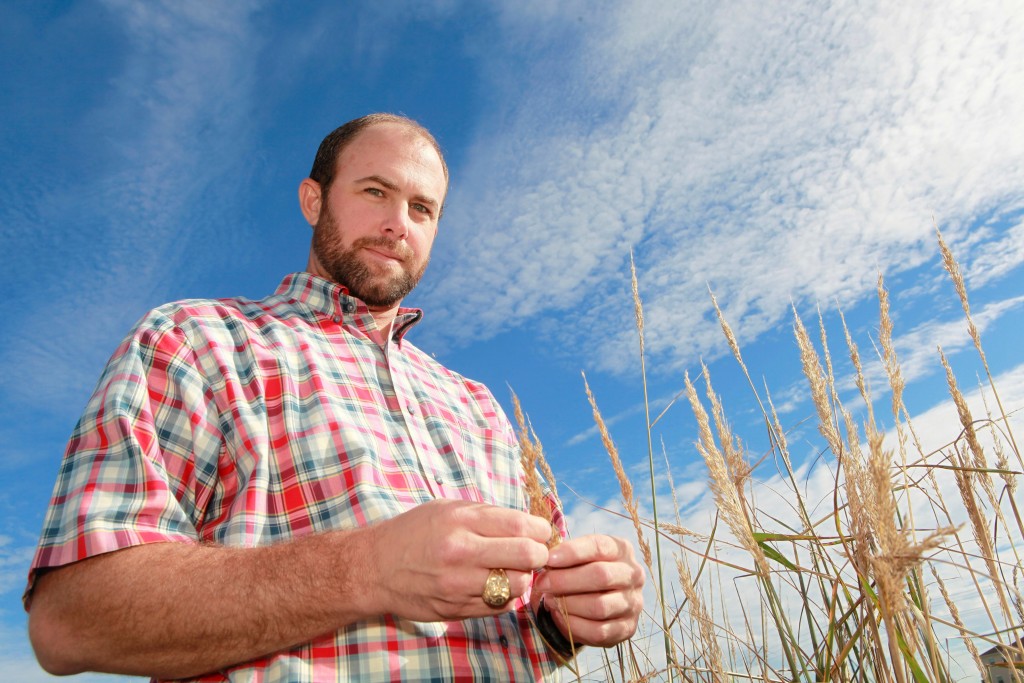
Forrest is the Dan L Duncan Endowed Director of the South Texas Natives and Texas Native Seeds Programs at the Caesar Kleberg Wildlife Research Institute. The West Texas Native Seed Project effort is spearheaded by Texas Native Seeds in cooperation with the Borderlands Research Institute. Photo by Doug Smith
Permian Basin Oil and Gas (PBOG): Your program was cited by our associates at the Permian Basin Petroleum Association (based in Midland, Texas) as an innovative, successful program that is doing great work for the benefit of energy companies. It’s our understanding that you help oil and gas companies plant native grasses to restore damaged areas.
Smith: Yes. That’s kind of the structure of the program. Basically, what our programs do is we work to develop the native seed sources that are needed to be able to successfully reclaim old pad sites or pipeline right of ways or other disturbed sites. Not just in the oil and gas industry, but for ranching, for other reclamation needs. Along highways, in conservation programs, et cetera. We work a lot with landowners in the oil and gas industry to make seed collections from native plants. Through a research process and a lot of cooperators, eventually we’ll end up releasing seed selections of native plants to commercial seed companies. Through them, it’s possible, then, to provide those seeds and source those seeds at the scales that are needed to do the reclamation work, if and where it’s needed. We’re in essence kind of the R&D arm of a lot of the restoration and reclamation work that is getting done.
At the same time, we do a lot of restoration research on the ground to figure out the best ways to tell oil companies, to tell land owners, how to be successful with those efforts.
PBOG: When you say you bring in the commercial seed companies—I’m not clear on that part. I pictured you bringing seeds in and seeding the areas and all. You don’t do that part. You’re more about the research behind it, is that it?
Smith: Correct. We’re developing the seed sources, so we develop the seed selections. We do a lot of the methodology research, but the actual provision of seed to—well, let’s say Oil Company X needs a hundred pounds of seed. That will in all likelihood be seed that we’ve developed, but it won’t be [seed we furnish them directly]. The transaction won’t take place between us and that oil company. It would be through an actual commercial company.
PBOG: A private company. Probably industry. It’s not government selling it. Makes sense it would be industry selling it. They’re in the business. The seed selection and all that. That’s interesting. Does your team have to do something to the seed stock to make it work, or is it more a matter of figuring out what mix?
Smith: It’s kind of “What mix?” and even more specific than that. It’s which populations of a plant species are best suited for restoration. In a given plant, you’ll have individuals that are different one from another. Same plant species, [but] just like any living thing, there’s variability in traits and genetics. Our process works to kind of go through the populations of a species that exist in a region, say like the Permian Basin, and find the populations that have suitable adaptations for use in restoration. Traits such as: they have a lot of viable seed and very vigorous seedlings. That would make them ideal to grow quickly and successfully on an old pad site.
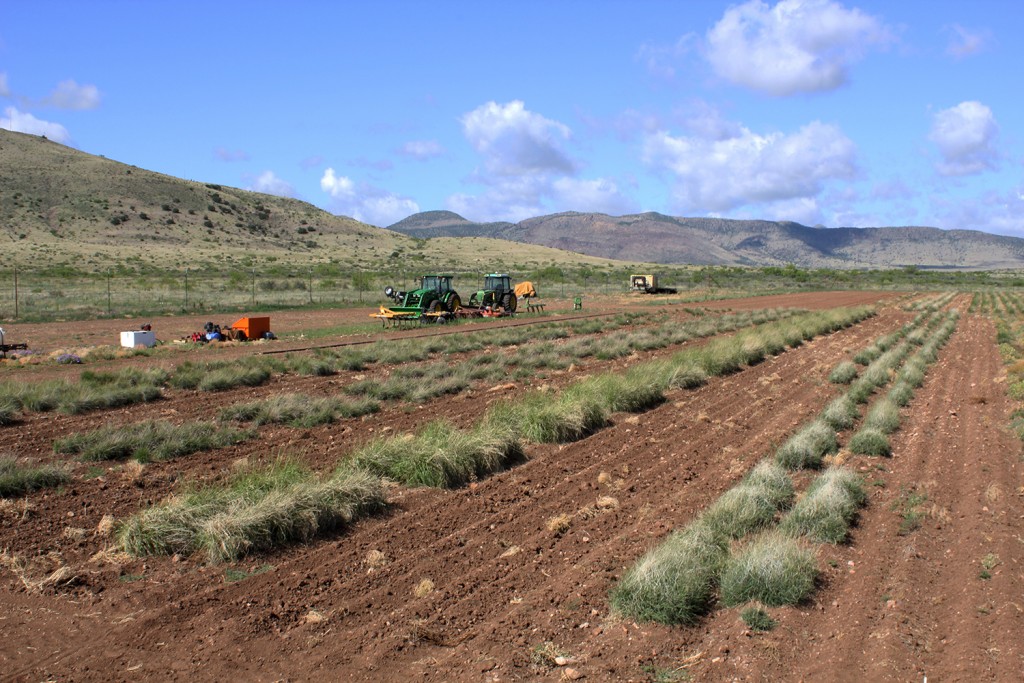
One of two research sites used to evaluate populations of native plants from West Texas to make selections for seed releases. The two evaluation locations are near Alpine and Odessa respectively. Photo by Colin Shackelford.
PBOG: Okay. You’re just selling the seeds? You’re not planting. You’re not putting them under the surface, right?
Smith: Correct. That process is to identify the material that’s going to be suitable for restoration. As far as modifying the plants in any way, no, we typically don’t. We’re looking for native material that can be sourced and provided at the amounts needed.
PBOG: Yes. Now, that’s got to be harvested somewhere. Your team doesn’t do that either, right? The seed, do you harvest it?
Smith: The seed, it would be provided to seed companies. And seed that’s provided to seed companies is grown essentially like a crop. It’s grown in a farming environment under irrigation. Harvested with combines.
PBOG: That makes sense. I pictured that if they are native [plants], then you’re going out into a native pasture collecting seeds somehow. But you’re not, and that wouldn’t be very efficient, would it?
Smith: Right. The problem with that is you don’t generally have big enough stands of those plants. You’ll have plants you don’t want mixed in. Then probably the bigger wild card in West Texas is that the weather is so sporadic and so dominated by drought that you might go five or six years without any wild seed production of any quantity. In order to supply a market year-in, year-out with high-quality seed, you have to grow it in an “artificial” environment, basically.
PBOG: Yes, that makes more sense because now I understand where these commercial companies come in. They don’t just take seed from your team and sell it. They make it into a crop. And harvest it.
Smith: Right. We would supply—let’s say we’re talking about a commercial seed company that wanted to be in this business—we might supply them enough seed for ten acres of production field. They’re going to take that ten acres, grow it, harvest it, turn it into enough seed to plant maybe a hundred acres. And that hundred acre-sized field would provide enough product to be commercial.
PBOG: Could you give me some examples of some native plants that are grown and distributed that way?
Smith: Well, we’ve had a program in South Texas for about 15 years. The work that we’re doing in West Texas is modeled after that South Texas program. The best examples I have are kind of from South Texas. We released 30 commercial seed selections for South Texas and in a given year, today, [release] enough seed of those selections to reseed or restore about 50,000 acres. Some of the species we’ve worked with, things like sideoats grama. There could be as much as fifteen or twenty thousand pounds of seed of that sideoats grama selection provided commercially year-in, year-out.
For West Texas, we started the program there in 2011. This year, we’re going to make two of our first seed releases or seed selections. Those species are whiplash pappusgrass and silver bluestem—two of the most common grasses throughout the Permian Basin, [and in fact in] all parts of West Texas. What we’ll be looking at doing is providing maybe fifty or a hundred pounds of seed of those selections to commercial feed companies this coming year. Then they will take it from there. Probably by 2017, quantities needed for on-the-ground projects out there will be available to folks.

Douglass King Seed Company in San Antonio mass produces many of the native seed products developed by the program. Pictured is slender grama. Photo by Forrest Smith
PBOG: Those are the pasture grasses, too, right? I know that the bluestem family is, the silver blue stem. The whiplash, I don’t know that grass, but it’s probably real common.
Smith: Yes, it’s one that a lot of people don’t know the name of, but they’ll know it by sight certainly. See it a lot.
PBOG: You’re putting in native grasses that have a commercial value, too, because they make pasture, if it’s a grazed area.
Smith: Right. They’re also of value for livestock. Probably as important is the fact that they are the basis for good wildlife habitat, particularly for quail.
PBOG: These go into right-of-ways and pad sites and, as you said, pipelines.
Smith: Yes. Pipeline right-of-ways. Anyplace they have disturbances to soil. We’ve had a lot of experience with that in the Eagle Ford shale in South Texas because a lot of these South Texas seed sources have been available pretty much the whole time that the Eagle Ford has been going on. For a lot of West Texas, historically, introduced grasses have been used a lot in reclamation. We’re hoping for this program to kind of turn the tables there by making natives available. Hopefully we’ll see greater use of them in this region.
PBOG: Yes. Introduced grasses were used because those were… well, those probably had some kind of farming function going on with those already, right?
Smith: Well, they were just kind of the products that were desired historically. When the only economic use of a ranch was to grow beef, that was the main concern. Since that time, we’ve… “we” meaning all of us—the land owner, the community, the scientist—have learned that there’s a lot of trade-offs inherent in using those introduced plants.
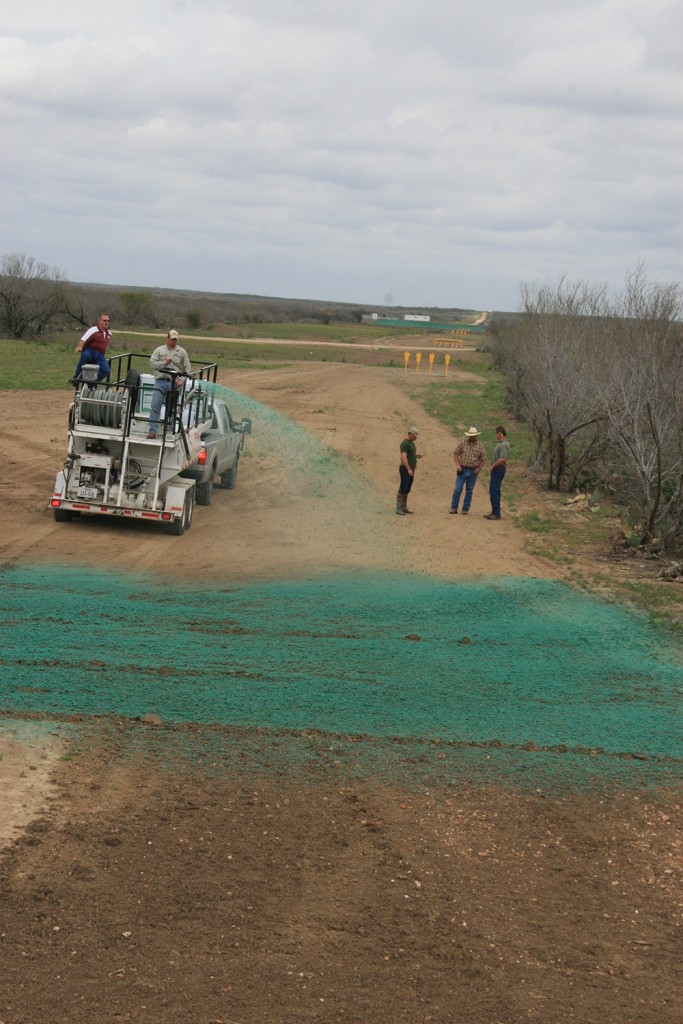
Pre-restoration photograph of a pipeline right of way in the Eagle Ford Shale that was reseeded using native grasses. By Forrest Smith. Corresponds with photography titled “After”. Photo by Forrest Smith
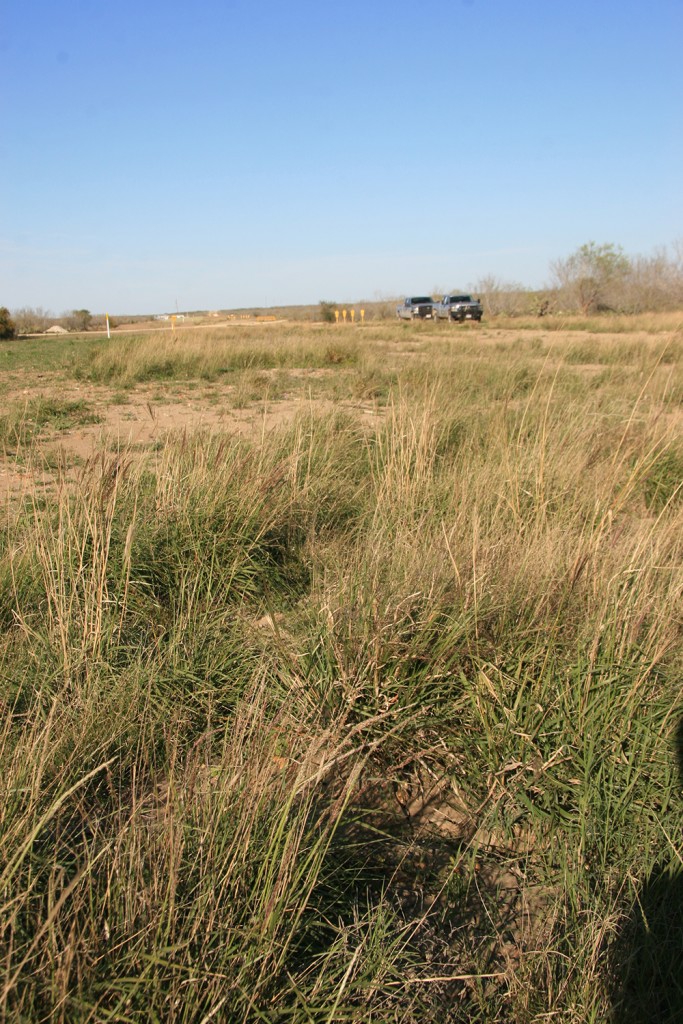
Post-restoration photograph of a pipeline right of way in the Eagle Ford Shale that was reseeded using native grasses. By Forrest Smith. Corresponds with photograph titled “Before”. Photo by Forrest Smith
PBOG: Yes.
Smith: They tend to be invasive. They tend to exclude other plants. All in all, for something like quail, they represent a lot poorer habitat than native vegetation would be.
PBOG: Okay, let’s say that a commercial company is working with an oil company, and they’re seeding some of these areas. How many different varieties of native plants would be in the mix that they might be seeding?
Smith: We tend to recommend mixes. Ideally, they’re going to have 10 to 15 species. That’s an ideal scenario. A lot of times, three or four may be good enough to be successful with, but generally speaking for restoration that’s aimed at mimicking a native plant community, diversity is kind of the hallmark of native plant communities, and diversity is a benefit to wildlife.
PBOG: Certainly.
Smith: The more plant species diversity you can have in a seed mix, the better quality of wildlife habitat you’ll restore.
PBOG: Do you get into any of the herbaceous plants or is it all strictly grass?
Smith: No, we do pretty much a mixture of both. Grasses are the backbone of any seed mix for reclamation because they also give you the erosion control that you need. Also, in most of Texas, you’re hoping areas, grasses are eighty percent of the community. Those herbaceous plants and forbs and flowers, whatever you want to call them, they’re very important, too, from the standpoint of their [value as] wildlife food sources, habitats for pollinators, birds, and so on. We work a lot with those herbaceous plants, too. They tend to be harder to grow at big scales and tend to cost more. We do focus I would say almost equally on grasses and herbaceous plants
PBOG: What would be an example of a larger, woody kind of a plant? A tree or something? Would there be something like that in the mix?
Smith: We typically don’t deal much with woody vegetation. In part because it’s rarely a problem. It comes back on its own effectively and is also hard to grow large quantities of seed of. Kind of a semi-woody forb or—“sub-shrub” would be the technical term—that we worked a lot with is orange zexmenia. That plant is a real common forb in the Edwards Plateau and some of the western areas that approach the Permian Basin. It’s a good seed producer for quail. Good plant for deer.
PBOG: Has that species been offered commercially?
Smith: That one has. It’s a selection we’ve made from South Texas and kind of Southwest Texas that’s grown in really big quantities by King Seed Company in San Antonio.
PBOG: Could you name a couple of commercial companies that deal in this world?
Smith: King Seed Company is kind of the main producer and distributor of seed sources that we’ve released so far. Another producer an fairly large distributor is Bamert Seed Company in Muleshoe, Texas.
PBOG: Are you seeing oil companies show interest in this?
Smith: I would say so far from our response with dealing with the Permian Basin Petroleum Association and companies based there, yes. I think a lot of oil companies are trying to move in the direction of having as small an environmental footprint as they can. I think also that increasingly, landowners and mineral lessors are cognizant of the impacts that can occur if good restoration isn’t practiced.

Native seeds were planted on this pad site in the Eagle Ford Shale to restore the denuded area and provide wildlife habitat. The caliche that was removed for restoration is visible in the background. Photo by Forrest Smith
PBOG: There’s a practice out there called Remediation. They remedy an area. Maybe they had a spill there or something damaged, some oil on the ground or whatever. They have different ways of remedying that. Some are chemical, some are more natural. They’re planted grasses in these areas. We’re talking about restoration of areas, but do you also remedy some of the oil mishaps by doing that?
Smith: Generally, a spill is going to have to be dealt with as a spill is dealt with, but having a lot of different native plant options to re-vegetate those kind of sites with can help that process be more successful. Often times, the metric for whether or not something has been remediated is this—has it been fixed in a way that you can grow plants and grasses again?
PBOG: There have been a lot of issues out West Texas and New Mexico—that’s the region we cover with the magazine—involving fights over endangered species listings like the Dunes Sagebrush Lizard and the Lesser Prairie Chicken and so on. There have been conservation efforts organized by the oil men to help those species. Would this sort of program like you have—would it be something that would be good for those wildlife species as far as helping fight against possible endangerment?
Smith: Yeah. It fits in that actually really well. You have a couple things that are pertinent there. One is if sites that potentially could be habitats for a listed species or proposed listed species are going to be impacted, it’s almost universally going to be a requirement to restore those sites. Given that whether it’s prairie chicken or the Dunes Sagebrush Lizard, whatever it is, native vegetation communities are those species’ habitat. Having the right seeds available to be able to restore those sites may make some of those operations more feasible.
The other current that goes on in those programs is various types of off-setting arrangements where if critical habitat here is damaged, money is paid into a fund to off-set that habitat impact by improving habitat elsewhere. Something like that could mean that—well, let’s say that you’re restoring a patch of native grassland that connects fragmented patches. Through a conservation program, that would be something that was on the table. In order to do that work, you’ve got to be able to restore the right plants, and seed sources like these dovetail really nicely into that.
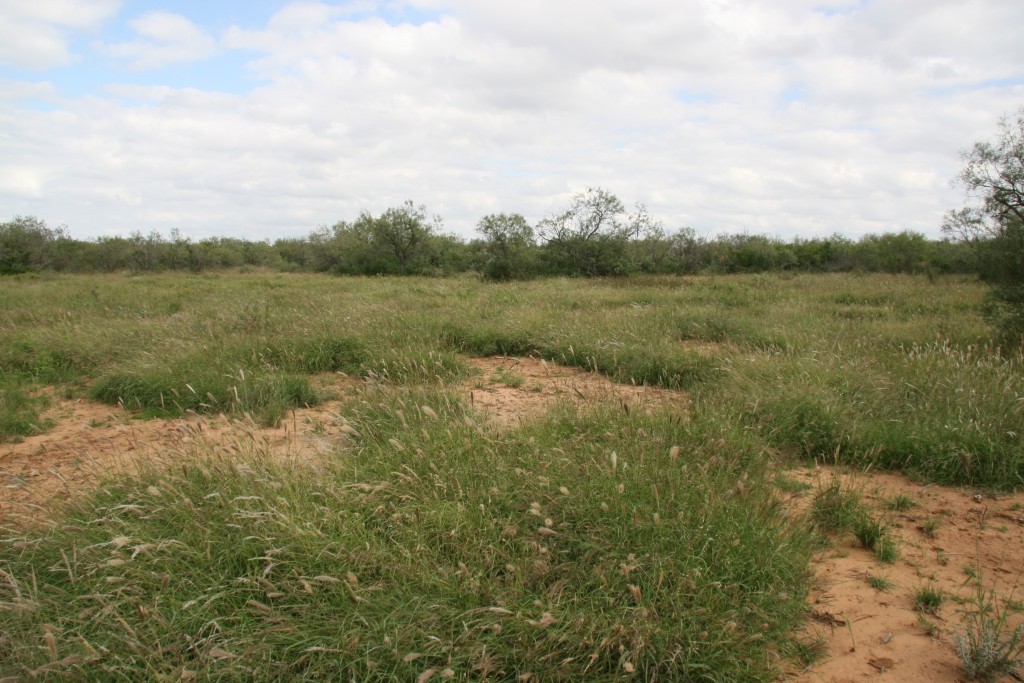
Restoration of native plants to historic pad sites is possible with the right native seeds. Photo by Forrest Smith
PBOG: Have you seen something that’s happened that’s been particularly gratifying to you to see success of it, in what you do?
Smith: One of the things I guess we’ve seen in South Texas has been the adoption of use of a lot of these seed sources and these seed mixes in the operations and on pipeline right-of-ways. We’ve had a lot of growth in new pipeline right-of-ways, both from a landowner standpoint and operator standpoint. We’re seeing some really good successful projects using native seeds to reclaim those right-of-ways.
It’s something that, had it occurred ten years ago, it would have been done differently. At that time, they probably would have been done in a way that those right-of-ways would have been a negative impact on both the area affected and the area around it. If introduced grasses had been planted, they would have established and spread to the adjacent areas.
Instead, now, those operators and those landowners have the opportunity to establish really good wildlife habitat on those right-of-ways. In the end, it’s certainly positive in many regards.
PBOG: If somebody had a disturbed area of land, and they say to themselves, “We’ll just let nature take over here. We’ll just let the surrounding area sort of re-vegetate it,” what would be the problem with that?
Smith: Often times, the disturbance you get after either drilling exploration or construction of a pipeline right-of-way, degrades or damages that natural seed bank that would have existed there otherwise.
The other problem you often times encounter in West Texas is that because of how drought-prone it is and, just in some ways because of the soil, et cetera, the natural reclamation process may take literally decades. The restoration in the way that we promote it and deal with it is in many ways an attempt to speed it up, to get the right plants there that have adaptions to reclaim in quickly so that you don’t end up with the bare old pad site from 40 years ago.
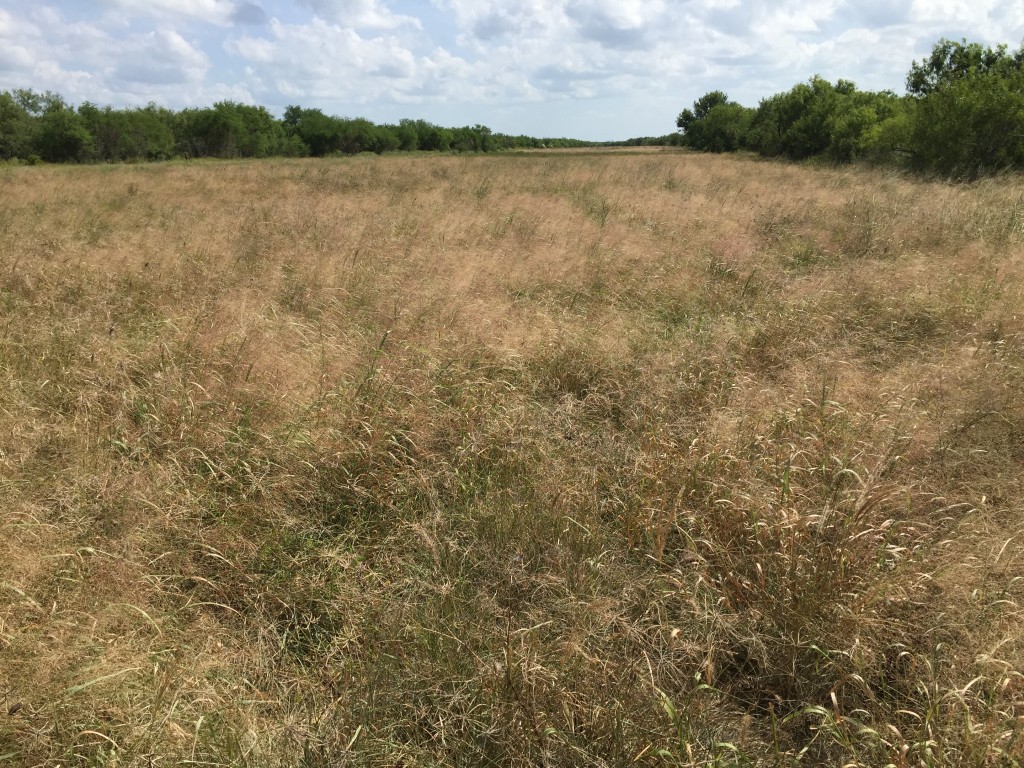
Native seed availability has allowed for the successful restoration of native plants to large scale natural gas right of ways crossing South Texas. Photo by Forrest Smith
PBOG: Any last thoughts?
Smith: Yes, I think worth mentioning that we’re with the Texas Native Seeds program—it’s that program that [supports] our efforts in the Permian Basin. Our program here [in South Texas] is based here within the Caesar Kleberg Institute, which is part of Texas A&M Kingsville. Also, a major partner in West Texas that we work really closely with on everything day in, day out, is the Borderlands Research Institute.









